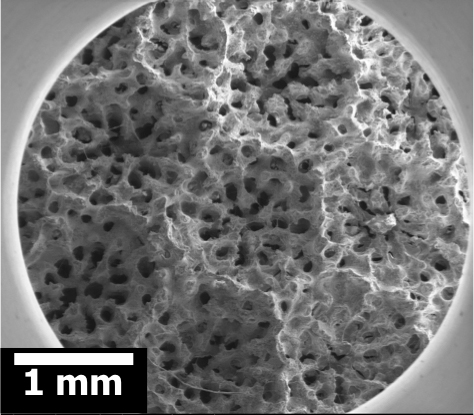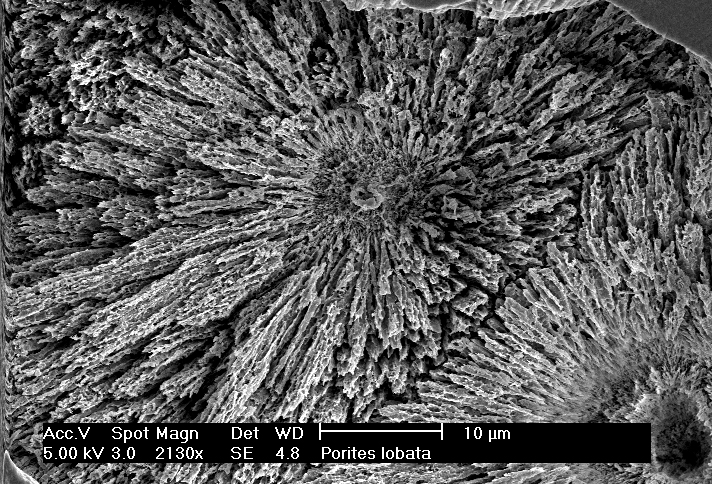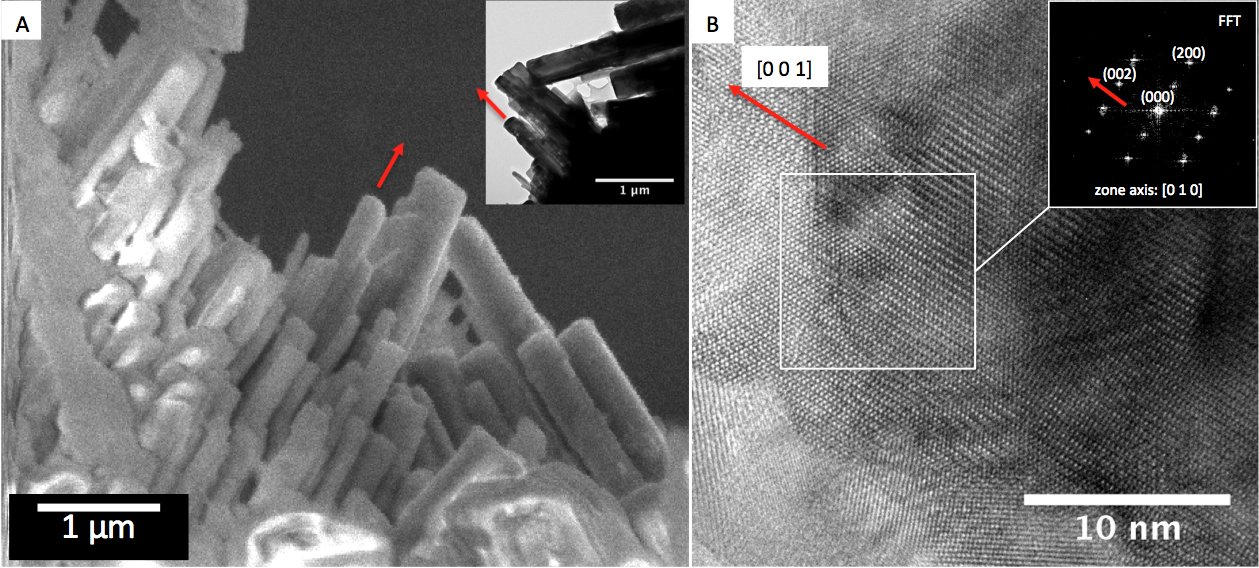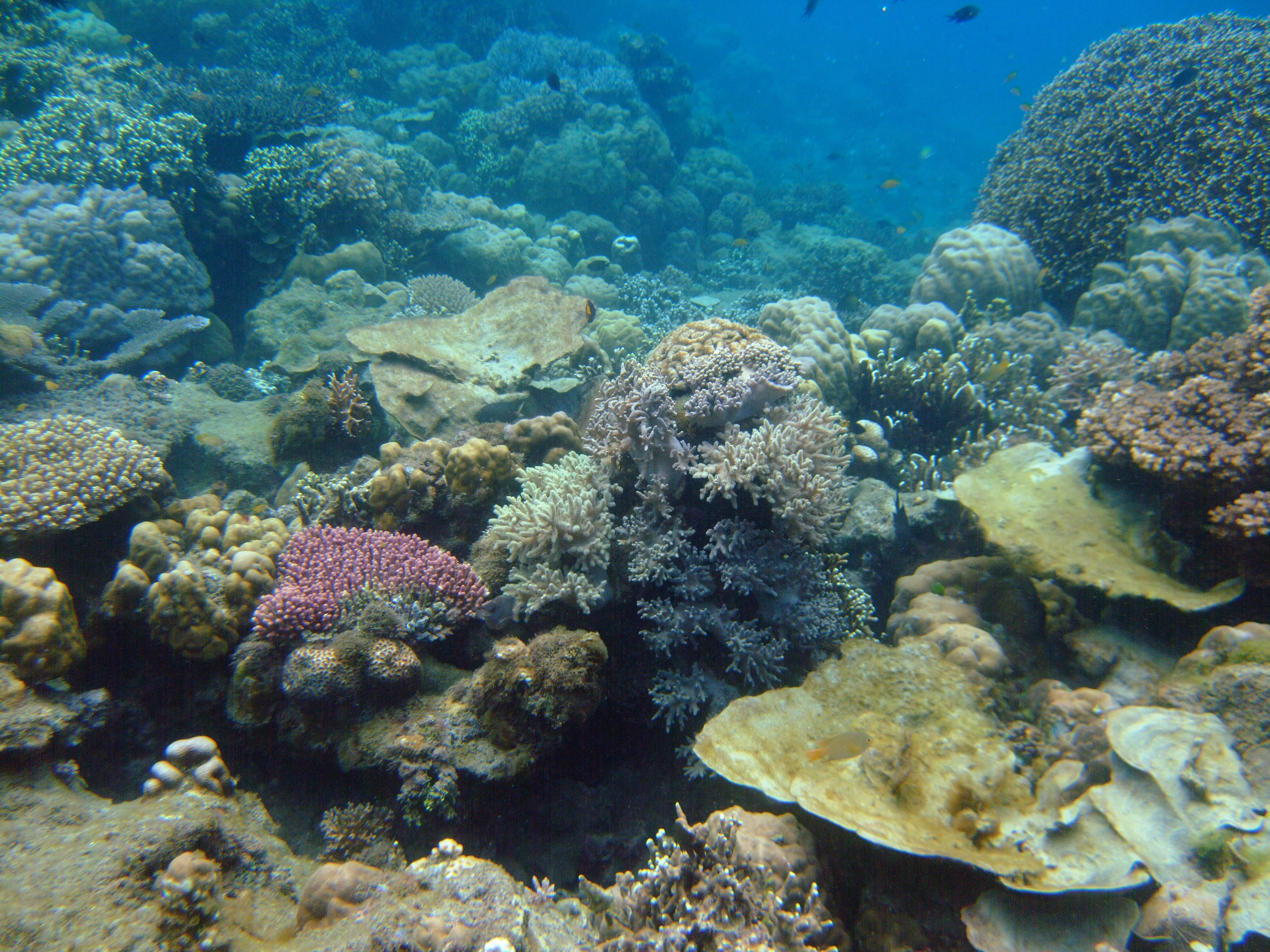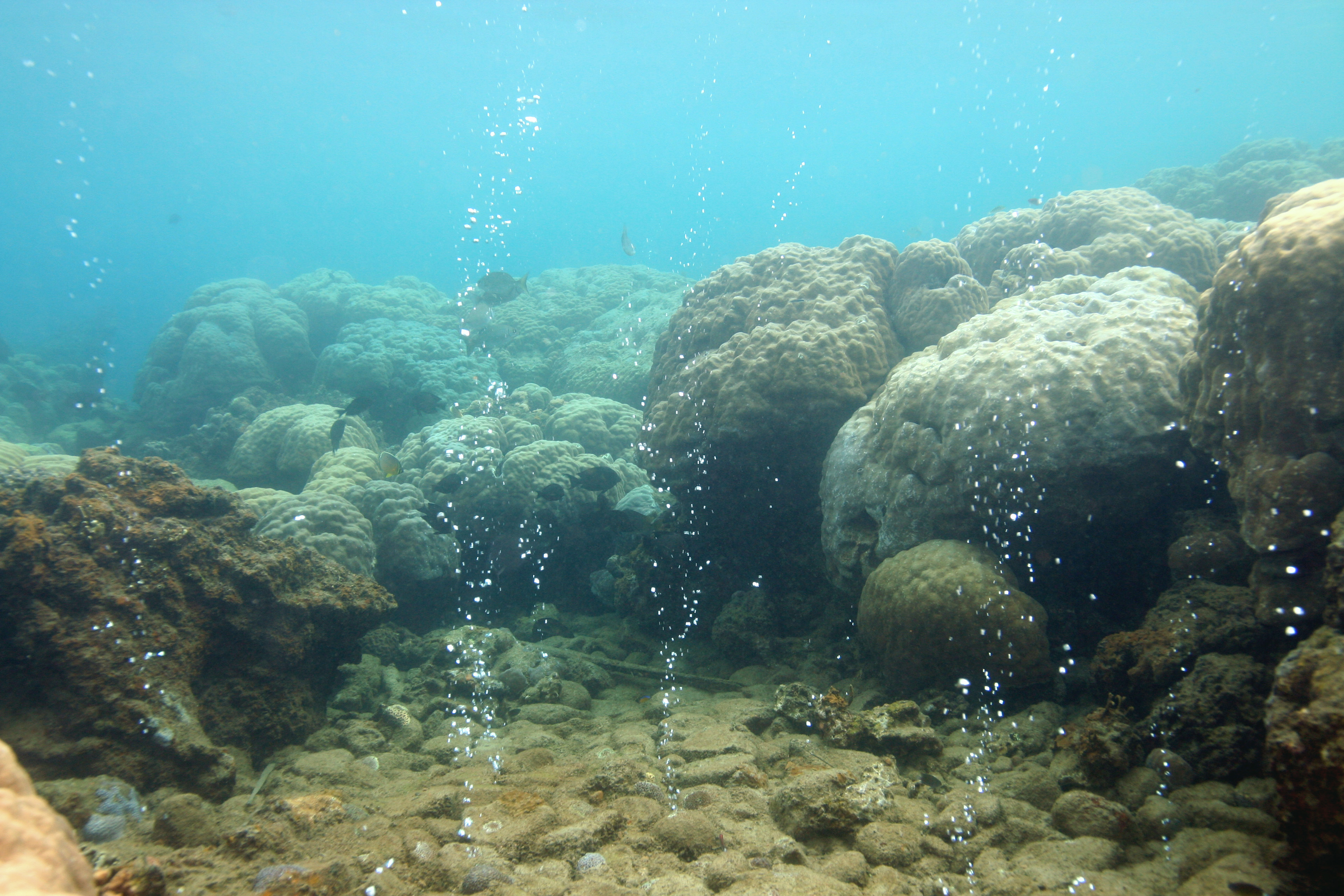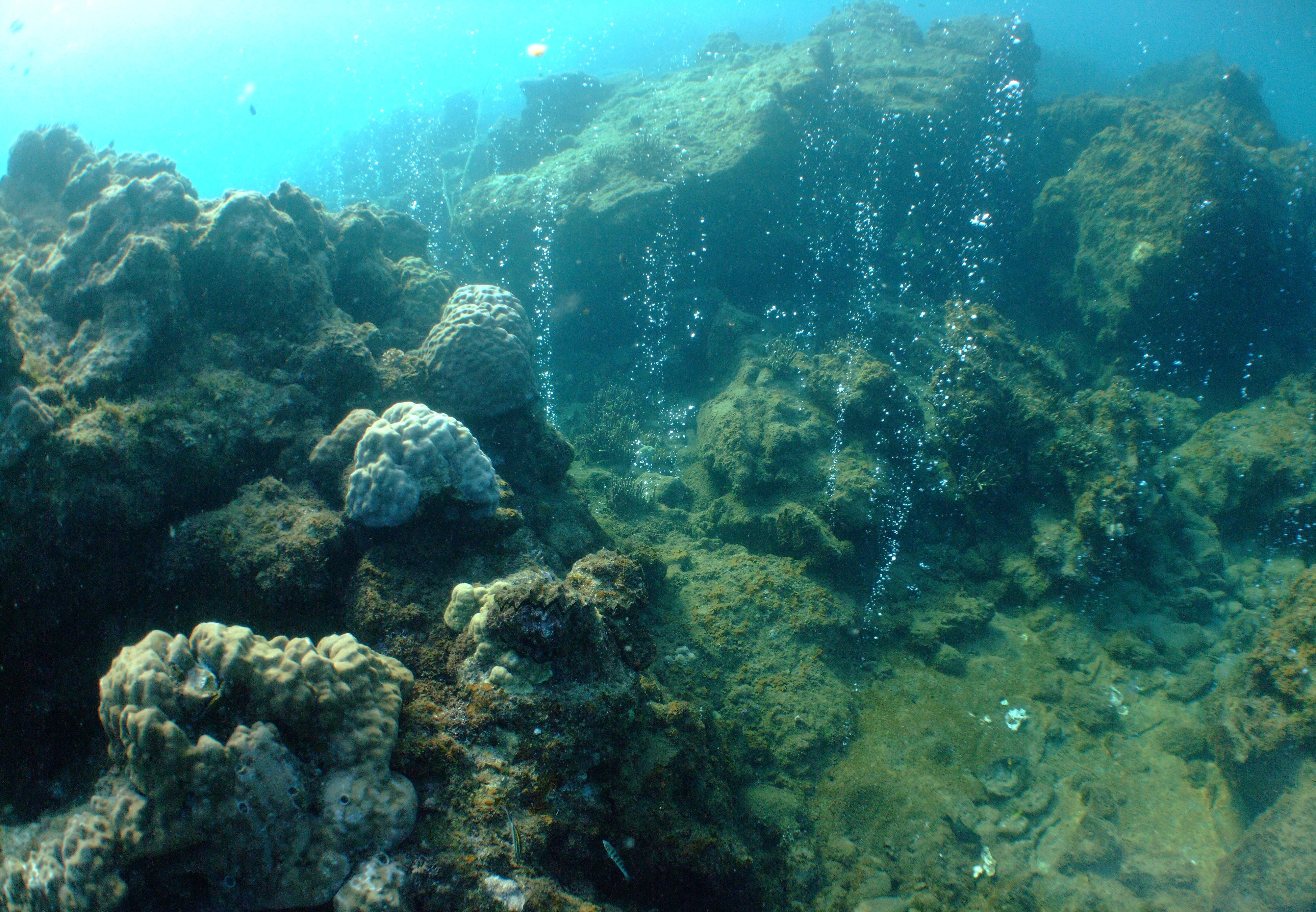Coral gallery
Click on the thumbnails to access a larger version of each image. Please see below for captions and credit information.
- Porites Lobata corallite surface: Scanning electron microscopy image of the surface of a Porites sp. coral from which the living tissue (biofilm) has been removed by submersion in fresh water and gentle brushing. The round features are where the polyp mouths were situated. Credit: Renée van de Locht/Dr Roland Kröger
- Porites lobata spherulite: Scanning electron microscopy image of a Porites lobata etched cross-section surface showing a spherulite; with a granular crystal centre and needle like crystal bundles radiating outwards. Spherulites form the building blocks of coral skeletons. Credit: Renée van de Locht/Dr Roland Kröger
- Acicular crystals:
A) Scanning electron microscopy image of a Porites lobata thin section showing the needle-like crystals, inset is a transmission electron microscopy image.
B) High resolution transmission electron microscopy of a crystal needle on the nanoscale, showing aragonite crystal lattice. Inset is a fast Fourier transform (FFT) analysis determining the crystal growth direction of the crystal needle. Credit: Renée van de Locht/Dr Roland Kröger - Healthy Papua New Guinean coral reefs bathed in seawater of normal pH. Photo credit: Katharina Fabricius, Australian Institute of Marine Science.
- Reefs exposed to carbon dioxide bubbling from submarine vents that are subject to a water acidity equivalent to levels that could be reached by the late 21st century under a business-as-usual scenario of carbon dioxide build up in the atmosphere. Photo credit: Katharina Fabricius, Australian Institute of Marine Science.
- Reefs exposed to intense carbon dioxide venting equivalent to levels that could be reached in the 22nd century if we do nothing to combat carbon dioxide emissions. Only a few corals can survive this level of water acidity. Photo credit: Katharina Fabricius, Australian Institute of Marine Science.
Contact details
Keep up to date
Subscribe to news feeds

